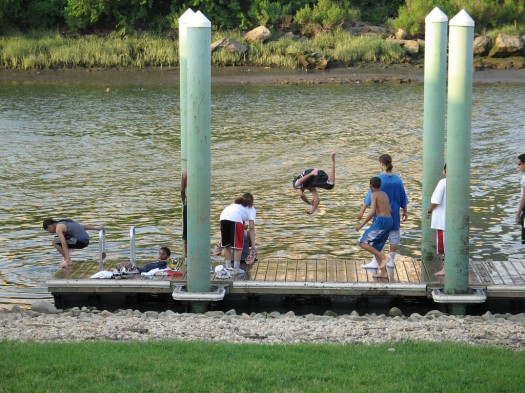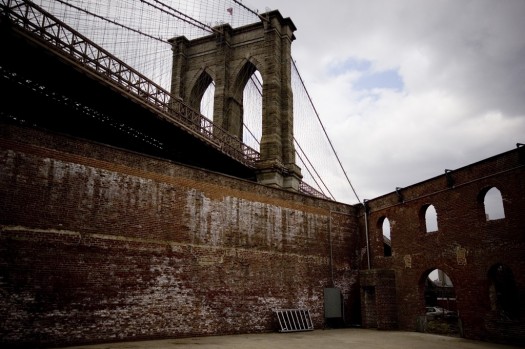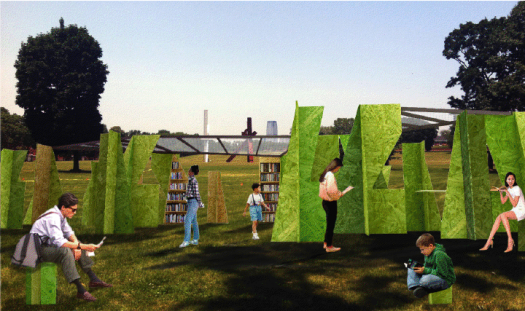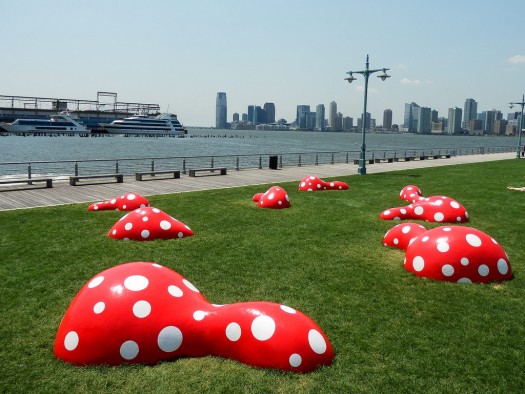
Celebrate ten years of Urban Omnibus and support ten more years of fresh, independent perspectives on citymaking with a donation today!
Celebrate ten years of Urban Omnibus and support ten more years of fresh, independent perspectives on citymaking with a donation today!
IT COSTS GREEN TO GREEN
In a New York Times op-ed this week, columnist Frank Bruni pens an optimistic piece about the remarkable and transformative greening of the five boroughs over the past few decades. It isn’t all good news, however; Bruni points out that funding models for new parks are not a one-size-fits-all approach (also discussed in previous UO roundups and in The Architects’ Newspaper), and the recent investment in the city’s green spaces has not reached some older, neglected parks. Nevertheless, echoing the sentiment of many New Yorkers who saw the High Line spring from the ruins of a train track, and witnessed Brooklyn Bridge Park transform from a wasteland of vacant piers and warehouses into the $350 million gem of the Bloomberg administration, Bruni exults in New York City’s status as a national leader in the greening of urban environments.

Swimming at Hunts Point Riverside Park | Photo by flickr user MajoraCarterGroup
BRIDGE ON THE RIVER BRONX
The much-maligned and once-abused shoreline and waterways of the South Bronx are undergoing significant cleanup and restoration efforts, as chronicled by Michael Kimmelman in his latest Times piece. “Park by park a patchwork of green spaces has been taking shape, the consequence of decades of grinding, grass-roots, community-driven efforts. For the environmentalists, educators, politicians, architects and landscape designers involved, the idea has not just been to revitalize a befouled waterway and create new public spaces. It has been to invest Bronx residents, for generations alienated from the water, in the beauty and upkeep of their local river.” Kimmelman, like Frank Bruni (see above), notes that the progress is subject to bureaucratic red tape and private interests, and is slow and often lacking cohesion; yet, there is a “quiet renaissance” taking place. Encouraged by the river’s improving ecological health, one of the neighborhood’s long term goals is to create a greenbelt along the Bronx River, stretching as far as funding will allow. For more details on the waterfront and parkland recovery efforts underway in the Bronx, read Kimmelman’s full piece and watch a video of his tour of the river here.
GRANDER CENTRAL
Last week, the Department of City Planning unveiled a set of new zoning regulations for Midtown East, covering roughly 39th to 57th Streets between Second and Fifth Avenues, that will allow central Manhattan to grow a little taller. The plan alleviates the regulatory obstacles inhibiting new development and identifies key areas in Midtown East that would be suitable for modern, iconic buildings to help revitalize the neighborhood. The area immediately surrounding Grand Central Terminal would be given the greatest height allowances, and would decrease as one moves outside the “core zone.” Some community board members were concerned when the Department revealed its intent to add the relatively residential area of Turtle Bay to the list of development zones. In addition, special permits, air rights purchasing and district improvement bonuses would allow qualifying buildings to equal or even surpass the 77-story Chrysler Building. The ULURP process is set to begin in 2013.

Photo by flickr user Listen Missy!
THE SMOKE SHOW
In 2009, performing arts center St. Ann’s Warehouse was told its existing location would soon be the site of a new condominium project, and thus began its search for a new home. When the theater company set its sights on the old Tobacco Warehouse space in DUMBO, local activists sued to stop the City from making the sale. Now, after 18 months of fierce debate and lawsuits, an agreement has been reached between community groups and local government that greenlights the next steps to secure regulatory approval for adaptive reuse of the space, and solidifies St. Ann’s as future tenant of the historic ruins of the Tobacco Warehouse. The theater company has teamed up with H3 Hardy Collaboration Architecture to design a building within a building, “complementing and not mimicking the historic building,” according to H3 principal architect Geoff Lynch. Plans for conservation and development of the adjacent Empire Stores are also included in the deal. Read more about the plans for the new theater in The Architect’s Newspaper.

Image via SUPERFRONT
EVENTS AND TO DOs
LIBRARY OF IMMEDIACY
This Saturday, SUPERFRONT and Figment will be celebrating the opening of their outdoor installation PUBLIC SUMMER: Library of Immediacy. The Library is designed and constructed by architectural duo saA (Amy Chang and Seo Young Shin), selected as the PUBLIC SUMMER competition winner by a jury of architects, engineers and other urban thinkers (including UO Editor Cassim Shepard). Located on the parade grounds of Governors Island, the Library joins together an über-dream-team comprised of The People’s Library, art collective DADDY, Bed-Stuy group FOKUS and, of course, SUPERFRONT for a summer of events and workshops. The grand opening will feature performances, live music and other “interactivities.” Other upcoming event highlights include “Critical Walking on Governors Island with Occupy University,” “Fahrenheit 451, Libraries, and the Imagination of Bibliocide with Michele Hardesty,” and “Monsters and Fairies with FOKUS.” In addition, SUPERFRONT explicitly mentions that “visitors are welcome to bring books and objects to the site that hold personal meaning to add to the growing collection at the the outdoor Library.”
GOWANUS BY DESIGN: WATER_WORKS
Last year, the founders of advocacy group Gowanus by Design shared the results of their first design competition, “Connections,” with Omnibus readers, and elaborated on their efforts to use design competitions to encourage conversation about and engagement with the challenges facing Gowanus, Brooklyn. This week, they are launching the second installment of the competition series: “Water_Works.” The call for entries asks participants to envision site-specific solutions that provide both a community resource and a combined sewer overflow (CSO) retention facility. Entries should “present site-specific solution(s) that simultaneously explore water’s role in recreation, quotidian uses, and in contaminated urban environments, and demonstrate how a new community center and retention facility represent a more progressive view of our city’s infrastructure.” Registration is open through October 19th, 2012; submissions are due by December 14, 2012. More information and resources can be found here.

Photo by flickr user panda073
SEEING SPOTS
Artist Yayoi Kusama, well known for her polka dot and Pop-influenced art, is being featured in a career retrospective at the Whitney Museum, reviewed in The New York Times this week. On view until the end of September, the show highlights Kusama’s prolific output and works in a variety of media including “painting, drawing, sculpture, film, performance, and immersive installation.” In conjunction with the show, Kusama has created a series of off-site projects: “Guidepost to New Space” is a major public art installation at Pier 45 in Hudson River Park presented by the Whitney, Gagosian Gallery and the Hudson River Park Trust; and Louis Vuitton stores throughout the city will be featuring the artist’s signature polka dots on their façades, including a dedicated pop-up store on 5th Avenue.
The Roundup keeps you up to date with topics we’ve featured and other things we think are worth knowing about.
The views expressed here are those of the authors only and do not reflect the position of The Architectural League of New York.